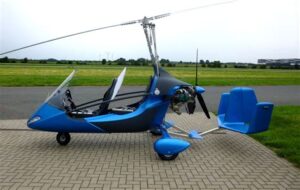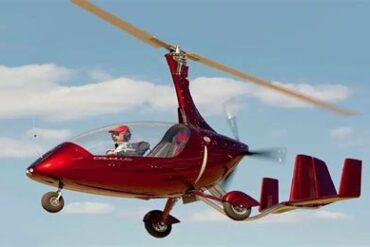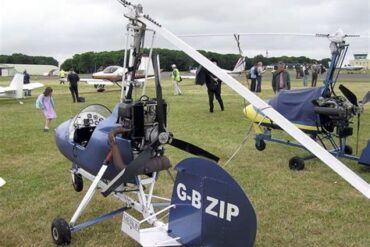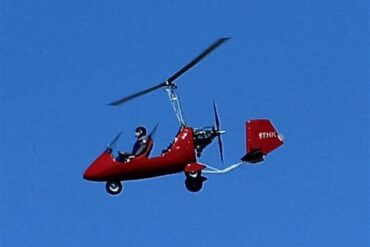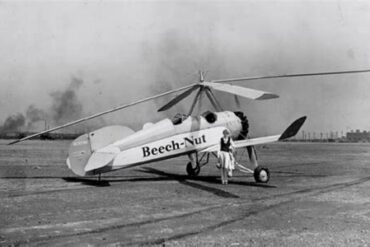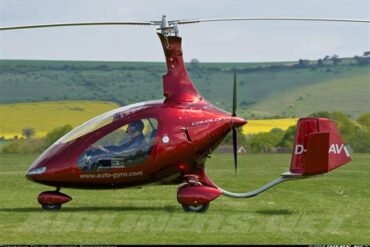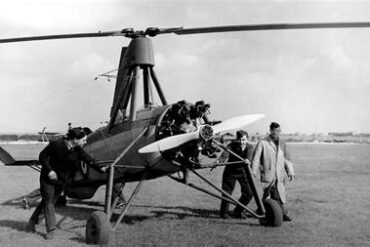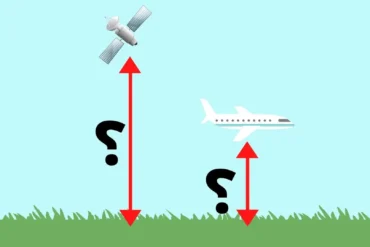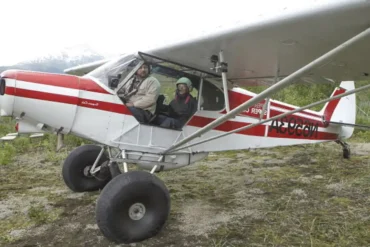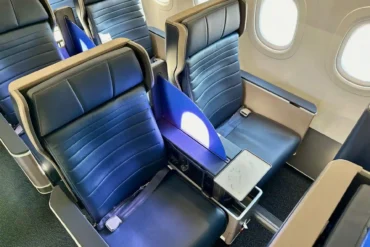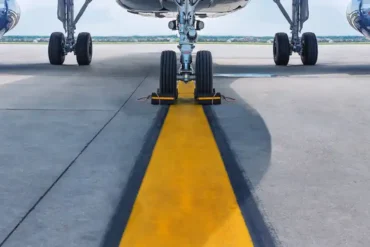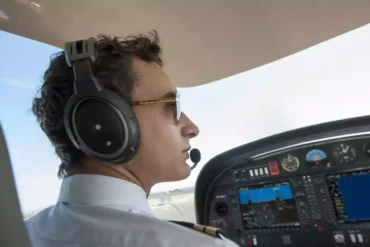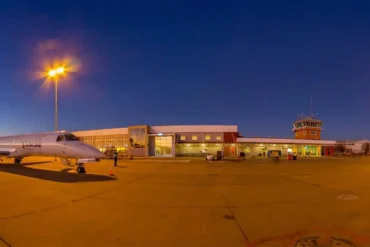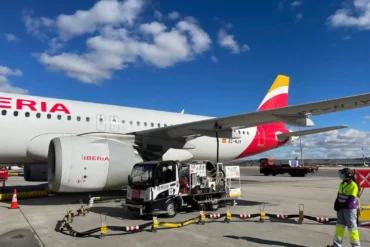Autogyros, also known as gyroplanes or gyrocopters, are unique aircraft that have been captivating aviation enthusiasts for decades. Unlike helicopters, autogyros use an unpowered rotor for lift, and their forward thrust is provided by a conventional engine-driven propeller. This configuration allows for unparalleled safety, agility, and efficiency, making autogyros a popular choice for both recreational flying and specialized applications.
Autogyros were first invented in the 1920s by Spanish engineer Juan de la Cierva, who sought to create an aircraft that could safely descend even if the engine failed. The result was the autogyro, a craft that has evolved significantly over the years, incorporating modern materials, advanced aerodynamics, and cutting-edge technology.
How Autogyros Work
Understanding the mechanics of autogyros is crucial for appreciating their unique capabilities. Unlike helicopters, which require power to rotate their blades and generate lift, autogyros operate on a principle called autorotation. In an autogyro, the rotor blades spin freely due to the aerodynamic forces acting on them as the aircraft moves forward.
Rotor Dynamics
The rotor system in an autogyro is not powered by the engine. Instead, it relies on the forward motion of the aircraft to spin the rotor blades. As air flows through the rotor disc from below, it causes the blades to rotate, creating lift. This lift is what keeps the autogyro airborne. The pitch of the rotor blades can be adjusted to control the amount of lift, allowing the pilot to ascend, descend, or maintain a steady altitude.
Engine and Propeller
The engine of an autogyro drives a propeller, typically mounted at the rear of the aircraft, providing the necessary thrust to move the aircraft forward. The combination of engine power and rotor lift allows the autogyro to take off in a relatively short distance, climb at a steep angle, and even hover momentarily in some configurations.
Control Surfaces
Autogyros are equipped with conventional control surfaces such as ailerons, rudders, and elevators, which allow the pilot to steer the aircraft. These controls work in conjunction with the rotor to provide precise maneuverability, even at low speeds. The unique control dynamics of autogyros enable them to perform tight turns, quick stops, and other advanced maneuvers that are difficult for other aircraft to achieve.
Advantages of Flying an Autogyro
Autogyros offer a range of benefits that make them an attractive option for both novice and experienced pilots. From safety to versatility, these aircraft are well-suited for a variety of uses.
Safety Features
One of the most significant advantages of autogyros is their inherent safety. Because the rotor is unpowered, the risk of catastrophic failure is minimized. In the event of an engine failure, the autogyro can safely glide to the ground using autorotation, with a much lower risk of a crash compared to fixed-wing aircraft or helicopters.
Short Takeoff and Landing (STOL) Capability
Autogyros require very little runway space to take off and land, making them ideal for operations in confined areas. Their STOL capabilities allow them to operate from small airstrips, fields, or even roads, providing access to remote locations that are inaccessible to other types of aircraft.
Cost-Effective Operation
Compared to helicopters and fixed-wing aircraft, autogyros are relatively inexpensive to purchase, maintain, and operate. They consume less fuel, require less complex maintenance, and have lower insurance costs, making them an economical choice for personal and commercial use.
Versatility
Autogyros can be used for a wide range of applications, including aerial photography, agriculture, surveillance, and recreational flying. Their ability to fly at low speeds and altitudes makes them ideal for tasks that require precision and control.
Choosing the Right Autogyro
When selecting an autogyro, it’s important to consider factors such as performance, comfort, and intended use. Here are some key considerations to keep in mind:
Performance Specifications
Different autogyro models offer varying levels of performance, including maximum speed, range, and payload capacity. Pilots should choose a model that meets their specific needs, whether it’s for long-distance travel, short hops between locations, or specialized missions.
Comfort and Ergonomics
Comfort is an important factor, especially for long flights. Modern autogyros are equipped with features such as adjustable seats, climate control, and noise reduction systems to enhance the flying experience. Pilots should look for models that offer a comfortable cockpit and easy-to-reach controls.
Customization Options
Many autogyro manufacturers offer customization options that allow pilots to tailor their aircraft to their preferences. This can include everything from paint schemes and interior finishes to advanced avionics and safety features. Customization not only adds to the aesthetic appeal of the aircraft but also enhances its functionality.
Maintenance and Safety Considerations
Regular maintenance is essential to ensure the safety and longevity of an autogyro. Here are some key aspects to consider:
Routine Inspections
Autogyros require regular inspections to check for wear and tear on critical components such as the rotor blades, engine, and control surfaces. Pilots should adhere to the manufacturer’s recommended maintenance schedule and address any issues promptly to avoid potential safety hazards.
Rotor Blade Care
The rotor blades are one of the most critical components of an autogyro. Regular inspections should be conducted to check for cracks, corrosion, or other signs of damage. Proper cleaning and storage of the rotor blades can also extend their lifespan and improve performance.
Engine Maintenance
The engine is the heart of the autogyro, and regular maintenance is crucial to keep it running smoothly. This includes oil changes, fuel system checks, and periodic overhauls. Pilots should also ensure that the propeller is balanced and free of damage.
Safety Equipment
Equipping the autogyro with the necessary safety equipment is essential for safe operation. This includes items such as emergency parachutes, fire extinguishers, and first aid kits. Pilots should also undergo regular safety training to stay current with best practices and emergency procedures.
Legal and Regulatory Considerations
Operating an autogyro requires compliance with various legal and regulatory requirements. Pilots should be aware of the following:
Licensing Requirements
In most countries, a pilot’s license is required to operate an autogyro. The specific requirements vary depending on the jurisdiction, but typically include completing a certain number of flight hours, passing a written exam, and demonstrating proficiency in flying an autogyro.
Airworthiness Certification
Autogyros must be certified as airworthy by the relevant aviation authority. This involves regular inspections and adherence to maintenance standards to ensure the aircraft is safe to fly. Pilots should keep detailed records of all inspections and maintenance activities to comply with certification requirements.
Operating Limitations
There are specific operating limitations for autogyros, such as altitude restrictions, weight limits, and airspace regulations. Pilots should familiarize themselves with these limitations and adhere to them to ensure safe operation.
Conclusion
Autogyros offer a unique and exciting way to experience flight, combining the safety of autorotation with the versatility and agility of a small aircraft. Whether you’re a seasoned pilot or a newcomer to aviation, autogyros provide an accessible and cost-effective option for exploring the skies. By understanding the mechanics, benefits, and requirements of flying an autogyro, you can make an informed decision and enjoy the many advantages these remarkable aircraft have to offer.
